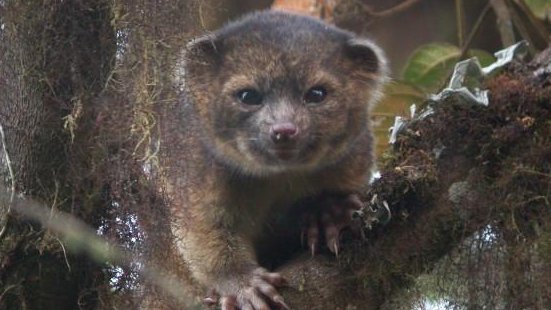A team spent 10 years examining animals and museum specimens to determine that the olinguito was a new mammal. Now, they have proven it. / Mark Gurney, Smithsonian Institute
Zoologists for the Smithsonian have discovered the first new species of carnivore in the Western Hemisphere in 35 years.
The Bassaricyon neblina, called the olinguito, is big-eyed, furry and rust-colored. It is a small member of the raccoon family that lives in the Andes Mountains.
"The discovery of the olinguito shows us that the world is not yet completely explored, its most basic secrets not yet revealed," said Kris Helgen, curator of mammals at the Smithsonian's National Museum of Natural History.
The olinguito is a carnivore, but also eats insects, plant nectar and fruits such as figs.
Helgen said the team discovered the animal high in the trees in the mountains of Ecuador and Colombia. Before the discovery, the species was "completely overlooked by all zoologists," Helgen said.
Helgen's team first saw the mammal in 2006 and have been determining its lineage ever since. So far, four subspecies of the olinguito have been identified.
"We saw olinguitos a number of times ...It was real, it was alive, it was in the wild," he said.
On the team's first night in the wild, they spotted one feasting on fruit high in the misty treetops.
"It sort of bounced around the trees almost like a monkey," said Roland Kays, olingo expert and team zoologist from the North Carolina Museum of Natural Sciences, "doing its thing, eating the figs."















